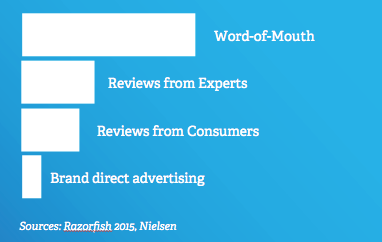By Jack Holt, Mattr CEO (Originally posted on Medium)
Recently the New Yorker reported on Facebook’s real reason for ending the peace between ad blockers and publishers. But instead of a crushing, Soviet-like strategic salvo, this latest offensive in the war on consumer happiness is more like a roll-up play in Senior and Assisted Living properties. On second thought, maybe it is very Soviet-like; it’s one big place where the brand voice will go to die.
The News:
Apple’s mobile ad blockers, which have earned a lot of attention, work only on Safari’s mobile browser. But Apple’s entire mobile platform is built on closed-system apps, not Web-based sites. Ads served within these apps cannot be blocked by anything, not even Apple’s own ad blockers.
And the Payoff:
It’s not a coincidence, either, that Apple makes money from apps through both sales and advertising, while it earns nothing from its mobile browser.
But publishers, even those with enormous resources such as Facebook, can’t keep this up much longer: Youngs do not trust the brand voice. Click-throughs depend on some constant of this trust to achieve their dismal yield. Reference Andrew Chen’s famous “Law of Shitty Clickthroughs” which hypothesizes that, once a new platform or tricky ad tactic loses its novelty, others show up to pump the click-through percentage back up, in a never-ending cycle. But Chen’s hypothesis assumes that next generations of consumers will behave as did the previous. That the variable of brand-voice trust will remain constant. As they say, “history repeats itself — but never in the same way.” Accordingly, new technology, that unknown responsible for continental shifts in our behavior/society, has invalidated Chen’s theory.
According to a 2015 report by Razorfish, only 6% of millennials trust what comes from the mouth of the brand. Gen Zs are even more cynical, especially since mobile ads can be particularly deceptive.

I’ve read other research stating that brand trust is 1- 3%, but you get the point; advertising is facing a Kodak moment in history.
Near-instant social connection — with breadth — is the proxy brand voice. Word of mouth with scale and accessibility is the new voice of the brand, which is mostly uncontrollable and therefore — and this is key — authentic.
Facebook Continues Its Strategy to Alienate “Youngs”
We’ve all read the reports confirming what us “Olds” see: That millennials are Facebook-Cutters and Gen Zs, like my 16 year old, are Facebook-Nevers. Facebook’s latest salvo, channeling as many brand voices as possible into Facebook-land, should provide them with a bump in ad revenue. But the yield from their portfolio of properties will surely decline. Chen’s clickthrough graph will take an inexorable nose-dive, as the Olds literally die off, leaving the brand-wary and noise-weary Youngs — those with the purchasing power — in full control of the brand voice.